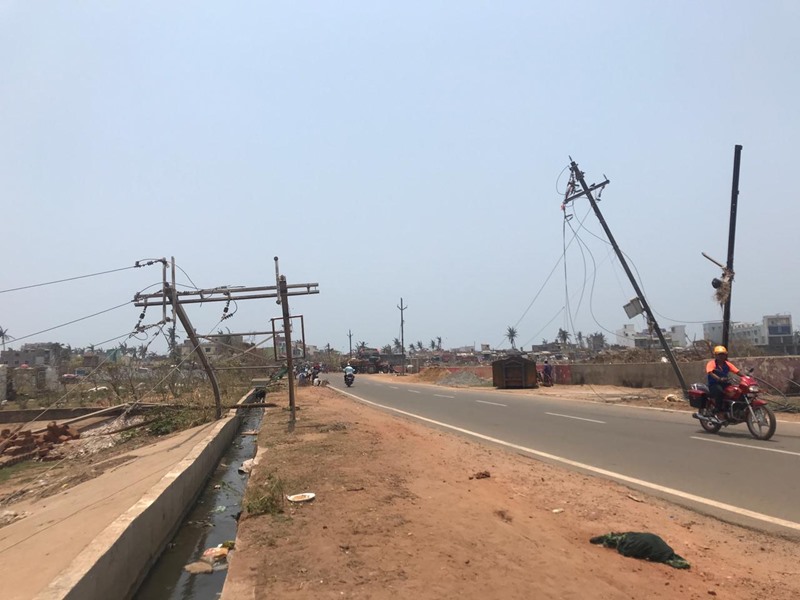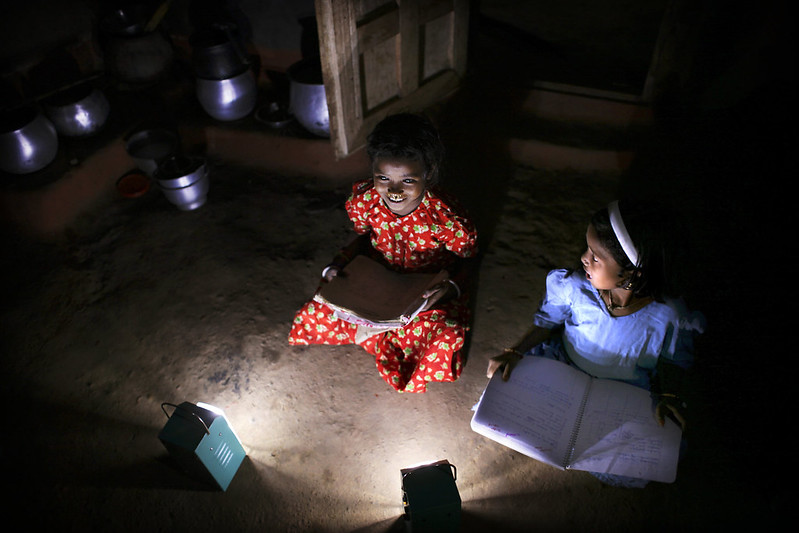Energising rural India with reliable electricity supply
51% of the MSMEs are in rural India and they engage 49.8 million workers. Supplying adequate, affordable and reliable uninterrupted electricity will help increase the efficiency of this crucial micro-enterprise sector.


Providing access to affordable, reliable, adequate and sustainable electricity to all is important. Photo: Divendra Singh
The recent reverse migration during the COVID-19 pandemic from urban to rural areas, where around two-third of India’s population lives, warrants the need to create more enterprises and income generating activities in villages. In order to do that, electricity is a basic necessity.
In April 2018, the Government of India declared achievement of 100 per cent village electrification, and expressed its intention to provide connection to more than 26 million remaining rural households that were yet not connected by electricity through the Pradhan Mantri Sahaj Bijli Har Ghar Yojana (Saubhagya). This scheme was launched in October 2017 and barring few households in Chhattisgarh, the scheme has successfully helped in providing connection to almost all remaining unconnected households .
There has been a marked improvement of electricity supply in rural India both in terms of coverage and usage of electricity. While government policies have been focussing mainly on household coverage and use of electricity for agricultural purposes, it should also now shift its attention to better efficiency and productivity among rural enterprises by ensuring adequate, reliable and uninterrupted electricity supply in the rural areas.

Electricity and rural enterprises
After Independence, the government policy on rural electricity emphasised on consumption of electricity for domestic and agricultural purposes. But during the pandemic, millions of workers moved back to the rural areas and it begged the question as to why jobs couldn’t be created in rural areas itself in order to lessen migration.
Policy makers began to re-examine the importance of primary sector occupations such as agriculture, animal husbandry, fisheries and collection of non-timber forest produce which were less impacted by the COVID situation.
The situation demanded to reset priorities to create employment opportunities in micro, small and medium scale enterprises in rural India by adding value to products received from primary sector activities like agriculture, animal husbandry, fisheries and collection of minor forest produce, besides enterprises such as weaving and handicraft.
Rural India already has micro-small and medium enterprises (MSMEs) which play a vital role in rural as well as the overall Indian economy. According to the Ministry of MSME’s annual report, 2017-18, 51 per cent of the MSMEs in India are in rural India and 49.8 million workers were engaged in these enterprises.
As per the 73rd round of the National Sample Survey conducted in 2015-16, out of 63.4 million unincorporated non-agricultural MSMEs in India, rural India has 32.5 million MSMEs and more than 99 per cent of these are in the micro enterprise category.
This means investment on plants and machinery in these micro-enterprises does not exceed Rs 25 lakh if it is in the manufacturing sector and is not more than Rs 10 lakh if it is in the service sector.
Supplying adequate, affordable and reliable uninterrupted electricity will help in increasing the efficiency of this crucial micro-enterprise sector and provide opportunities to work longer hours at the electricity-run machinery, and even during the night thereby enhancing the profitability and creating more jobs in rural India. More so in the crucial COVID-19 situation.

Electricity supply in rural India
The National Electricity Policy (NEP) entails provision of adequate reliable power at affordable cost with access to all citizens. The coverage of connections to villages and households have increased, and now is the time to ensure reliability and sustainability in rural electricity supply. It is common for rural households to get less hours of electricity and suffer frequent power breakdowns. These vary in different states.
According to the annual report (2019-20) of the Ministry of Power, there is a 0.7 per cent peak shortage of electricity. This means more than the issue of shortage, the problem is the distribution of electricity. There is a need for better management of supply of electricity at the local level during both summer and non-summer months.
In the event of frequent and long power cuts, enterprises have to either depend on off-grid sources like diesel/petrol-run generators, or just wait for the electricity to be restored. In both the cases, productivity and profitability of business/enterprises suffer.
Various studies have found that an increase in consumption of electricity helped achieve better economic and human growth.
As per the report Growth of Electricity Sector in India from 1947-2020, published by the Ministry of Power in 2020, the per capita consumption of electricity in both rural and urban areas has doubled in the last 15 years. From 559 kilowatt hour (kWh) in 2002 it increased to 1,149 kWh in 2017. This is considerably lower when compared to other developing countries like Brazil (2,521 kWh), China (4,546 kWh) and South Africa (4,004 kWh), and developed countries like USA (12,573 kWh) and Canada (14,273 kWh).
With an increase of economic activities and a supply of 24-hour electricity in all areas, the per capita electricity consumption will also rise.
In order to meet this increase in demand, electricity could be generated from renewable sources. Rural India provides a great opportunity and potential to generate and use more renewable energy like solar, wind and tidal energy, beside energy from biomass. This would not only help increase the share of renewable energy which is currently around one fourth of total power generation in India, but would also meet electricity demand in rural India in a decentralised way.
Rural India will benefit from receiving its energy requirement from renewable sources with the government’s recent emphasis of generation and use of solar energy, through new solar mega-projects and use of solar at household and institutional levels.

Many parts of rural India are vulnerable to frequent natural disasters like cyclones and floods. In such times, continuance of supply of electricity and early resolution of disruption of electricity is of vital importance. It is important therefore to provide, maintain and properly manage the rural electricity infrastructure.
SDGs and rural India
Providing access to affordable, reliable, adequate and sustainable electricity to all is important as it leads to better and inclusive economic growth. Goal 7.1 of the United Nations Sustainable Development Goals (SDG) has a target to ensure access to affordable, reliable, sustainable and modern energy for all by 2030. Goal 7.1.1 of the SDG specifically focuses on access to electricity.
India is gradually progressing towards achieving the SDG goal 7.1.1. This will mean better quality of life in rural India, and a support to entrepreneurship and income generating activities. It would boost the rural economy and reduce the number of people migrating from rural to urban areas in search of work.
Like the Government of India’s Integrated Power Development Scheme that facilitates state utilities to ensure quality and reliable 24×7 power supply in urban areas, there should be a similar scheme in rural areas as well. This would lead to better human development, support enterprises and boost rural economy.
Biswaranjan Baraj is a researcher working on the issues of social and economic development, public policy and sustainability. The views are personal.

